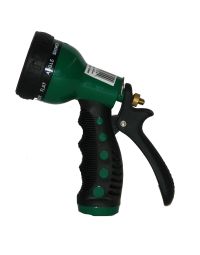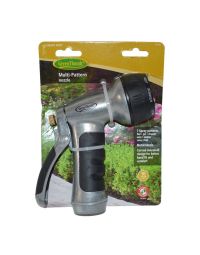NOTE: With the hotter weather we have been dealing with, our plants need more water than with typical warm weather. Because of the extended heat, plants will become stressed. *Remember to water early morning or in the evening, after the strongest heat of the day. Proper watering of your plants is essential to their health for years to come!
We offer proper watering equipment and techniques for garden plants.
- Plants that are newly planted require more consistency in watering. It takes about 3 years for perennials and most shrubs to get to their mature size.
- It takes trees, depending on the species, many years to establish.
- During the initial year(s), the plant is putting a lot of energy into root formation.
- Plants need adequate water down to the roots. Evergreens require watering until the ground freezes.
How long and how often should I water my plants?
One of the most commonly asked questions, especially during a time of hot temperatures and infrequent rains, is how long and how often should I water my plants? There is no simple answer to this question. It depends on a number of things and will vary accordingly. The one constant is that you want the soil to remain somewhat moist, like a damp paper towel, not crumbly dry and not dripping wet. When watering, the plants need to receive enough water to replenish the moisture throughout the plant into the root zone. Consider the following questions to determine what constitutes proper watering in your unique situation.
- Are the plants in the sun or the shade? If in the sun, is it morning sun or midday and afternoon sun?
- Are the plants receiving reflected light and heat from structures, rock mulch, and paved surfaces?
- What type of soil are they planted in - poor draining clay, fast draining sand, loamy, highly organic soil?
- What type of watering systems are you using – in-ground irrigation set for the lawn; in-ground irrigation with appropriate heads for watering shrubs and perennials and on a separate zone from the lawn; overhead, oscillating sprinklers hooked to a hose; soaker or drip hoses; hand watering?
- What type of plants – perennials, trees or shrubs, deciduous or evergreen?
- When were they planted (this year, many years ago)?
Do you have mulch down? What type – bark, pine needles, rock, straw, compost?
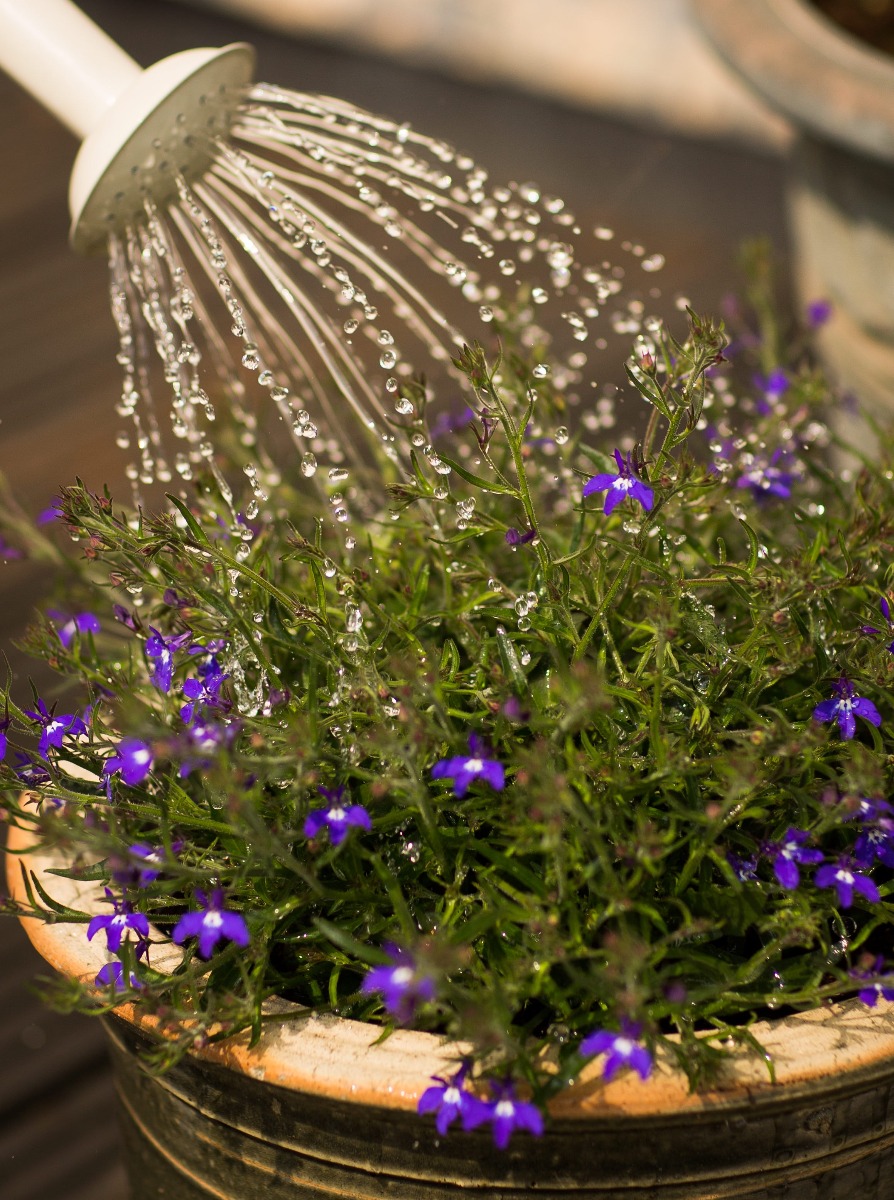
Overwatering can lead to mold and may make a plant more susceptible to disease
photo by Torsten
The same plant in different conditions will require different Watering Practices
- Tailor your watering to the conditions AND the plant. Note, a location that receives afternoon sun and wind (west side) will dry out faster than something that only receives morning sun or no sun.
- Clay soil holds onto moisture and drains slowly.
- Sandy soils drain quickly and do not hold onto moisture.
- Loamy soils have a high concentration of organic material in them, drain appropriately and stay moist longer.
If you are uncertain the type of soil you have, dig a hole and fill it with water. If the water does not stay in the hole at all but drains almost as quickly as you fill it, you have sandy soil. If the water stands for a long time in the hole, taking hours to over a day to drain, you have clay soil. Here’s a quick percolation tutorial from the University of Tennessee.
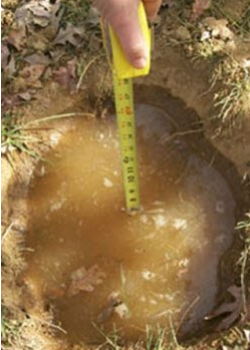
Percolation test
Amending Soil
- Amending clay or sandy soil annually with organic materials such as compost, peat moss, topsoil will help add nutrients as well as change its composition, over time, so it drains more appropriately.
- Simply amending the hole you plant in does not make a significant enough change to dramatically affect watering technique.
Determining when to Water
- Check a few of the plants in each type of condition.
- Push the mulch away from the base of the plant and dig down a few inches with a trowel.
- If the soil is crumbly, you need to water. If it is squishy, no need to water for a while.
- If it is slightly moist, check again in a day or two.
- You will find you need to water some areas more frequently than other areas
- Keep in mind too that if you have clay soil, even if the soil near the top of the plant feels dry, the base of the plant may be very wet.
Plants benefit most from slow, deep watering
- Use a soaker hose or drip irrigation.
- Overhead watering is less effective, can promote disease and fungal problems and wastes water.
- On hot, windy days, you can lose over 50% of the water due to evaporation and runoff before it even gets to your plants.
- In ground irrigation systems that are set to water your lawn are not appropriate to water most perennials, shrubs and trees. The perennials usually get too much water, and the shrubs and trees usually do not get enough.
- With hand watering you are very likely not giving the trees and shrubs enough water.
- If your only option is to water by hand, for trees and shrubs it is better to just place a hose at the base of the plant and turn the water down to a trickle, then leave it on each plant for 15-30 minute (depending on the type of soil you have). This allows the water to fully saturate the plant’s roots.
- If you are using soaker hoses or a drip system, the type of soil you have will also be important in determining how long to leave them on.
- If you have well draining soils, several hours is okay; for poorly draining soils 1 hour.
- If you are using overhead sprinklers, put them on for a set length of time (30 minutes or 1 hour) and check a few plants to determine how deeply watered they are. Use this to set up an appropriate schedule.
- Pay special attention to evergreens. After your perennials have gone dormant and the leaves have dropped off your deciduous trees and shrubs, you will still need to water evergreens.
- If you have an in-ground system, have a plan in place to get water to your evergreens once the system has been shut off.
- Because evergreens have needles, they lose moisture through them during the winter.
- If they do not have an adequate store of water going into the winter, come spring, they will be dead.
NOTE: if tree or shrub roots have been damaged by digging, they’ll need more water for a time, depending on their size.
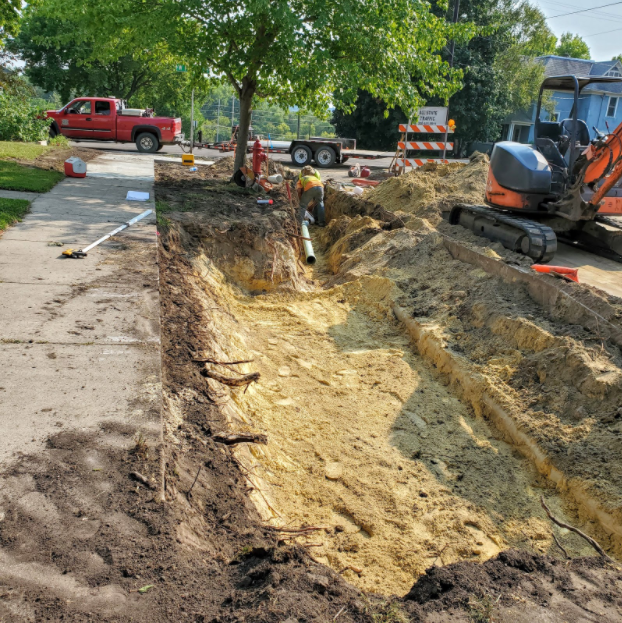
The roots on this Red maple sustained significant damage but WILL recover with extra watering.
Mulching your plants
- Bark, straws, compost products will help retain moisture reducing the amount of watering you will need to do.
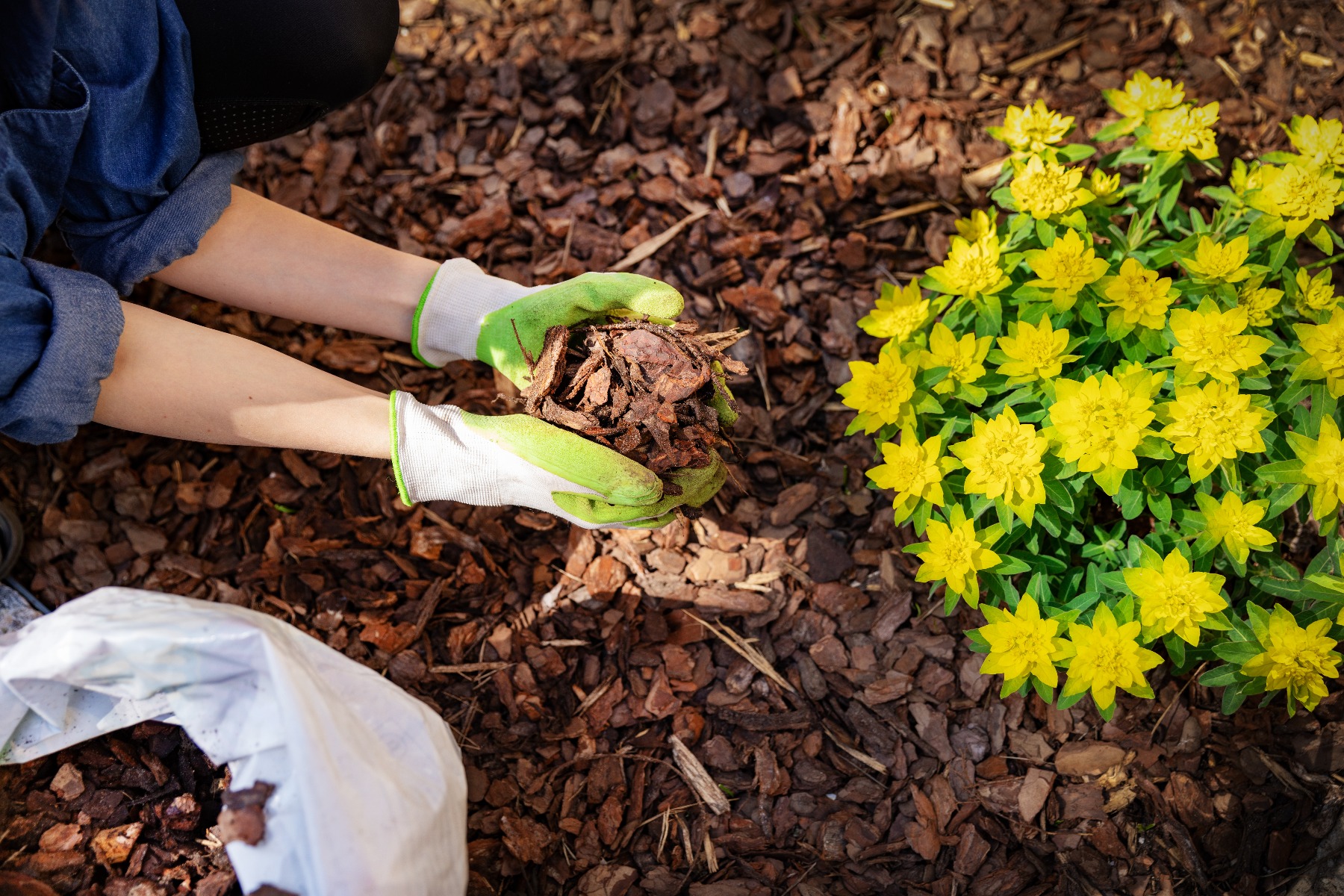
The experts at Gertens are always available to answer your questions!

